Every time we update to the latest software, we expect that our iPhones would run the smoothest they ever had. But in reality, this is farthest from the truth. A new software update also means a new host of bugs. And one of the parameters that suffer the most when this happens is the iPhone’s battery life.
While we can’t do anything about these bugs other than wait patiently for those ‘Bug fixes’ updates. But we can take more control over our iPhone’s battery life in the meanwhile.
In this article, we will discuss how to take better control of your iPhone’s battery life by changing these settings in iOS 13.
Disable Dynamic Wallpapers
Dynamic wallpapers may look and feel great, but they are also big battery drainers. If you are facing battery issues, use still wallpapers instead of these buggers and you will see a drastic improvement in your battery life.
To change your wallpaper, go to Settings > Wallpaper. Select Choose a New Wallpaper and tap on Stills and select a new wallpaper for your screen.
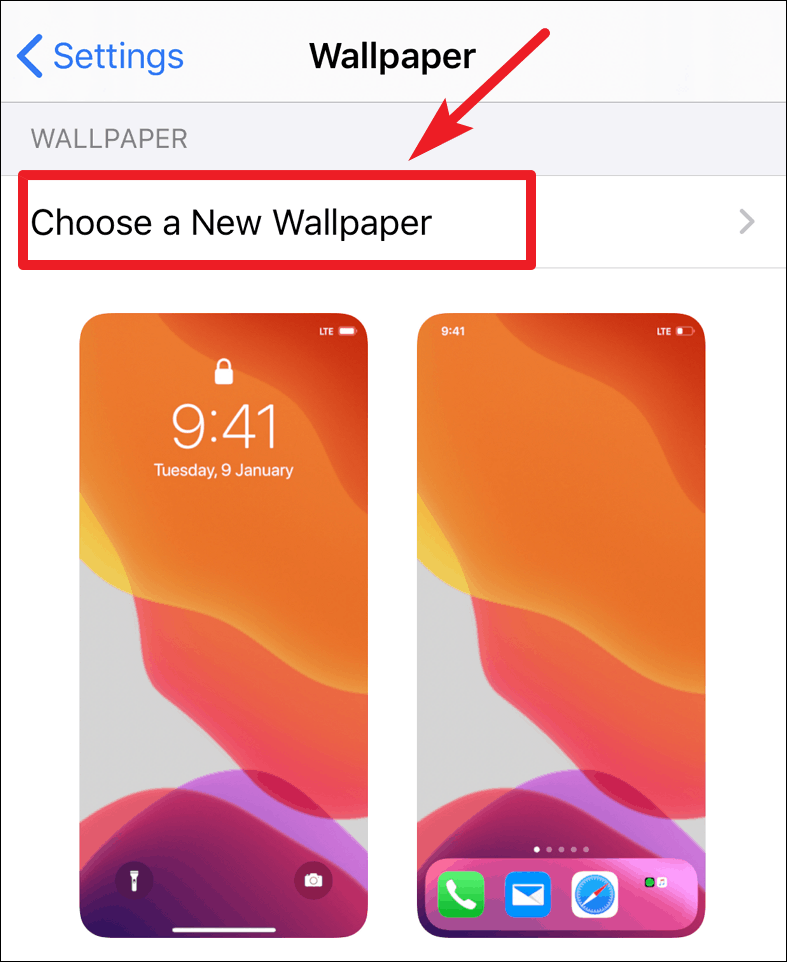
💡 If your iPhone has an OLED screen, a solid black wallpaper or wallpaper with considerable black color will further reduce battery usage as pixels are turned off for black color in the OLED display. If your phone has an LCD screen, the color won’t make any difference.
Use Dark Mode
Dark Mode was a long-awaited feature on iOS. But did you know that using Dark Mode on OLED screens can also help in improving the battery life of your device? Dark Mode swaps out white backgrounds with a dark background, and in OLED screens that means turning off the pixel, hence, saving precious battery life.
You can turn on the Dark Mode on iPhone either from the Control Center or Settings. In Control Center, hold and tap the brightness control and then tap on the Dark Mode option to turn it on/ off.
In Settings, go to Display & Brightness, and turn on Dark Mode. You can also set the Dark Mode setting to be turned on automatically during a certain time of the day. Just turn the toggle on for Automatic under Appearance settings in Display & Brightness Settings.
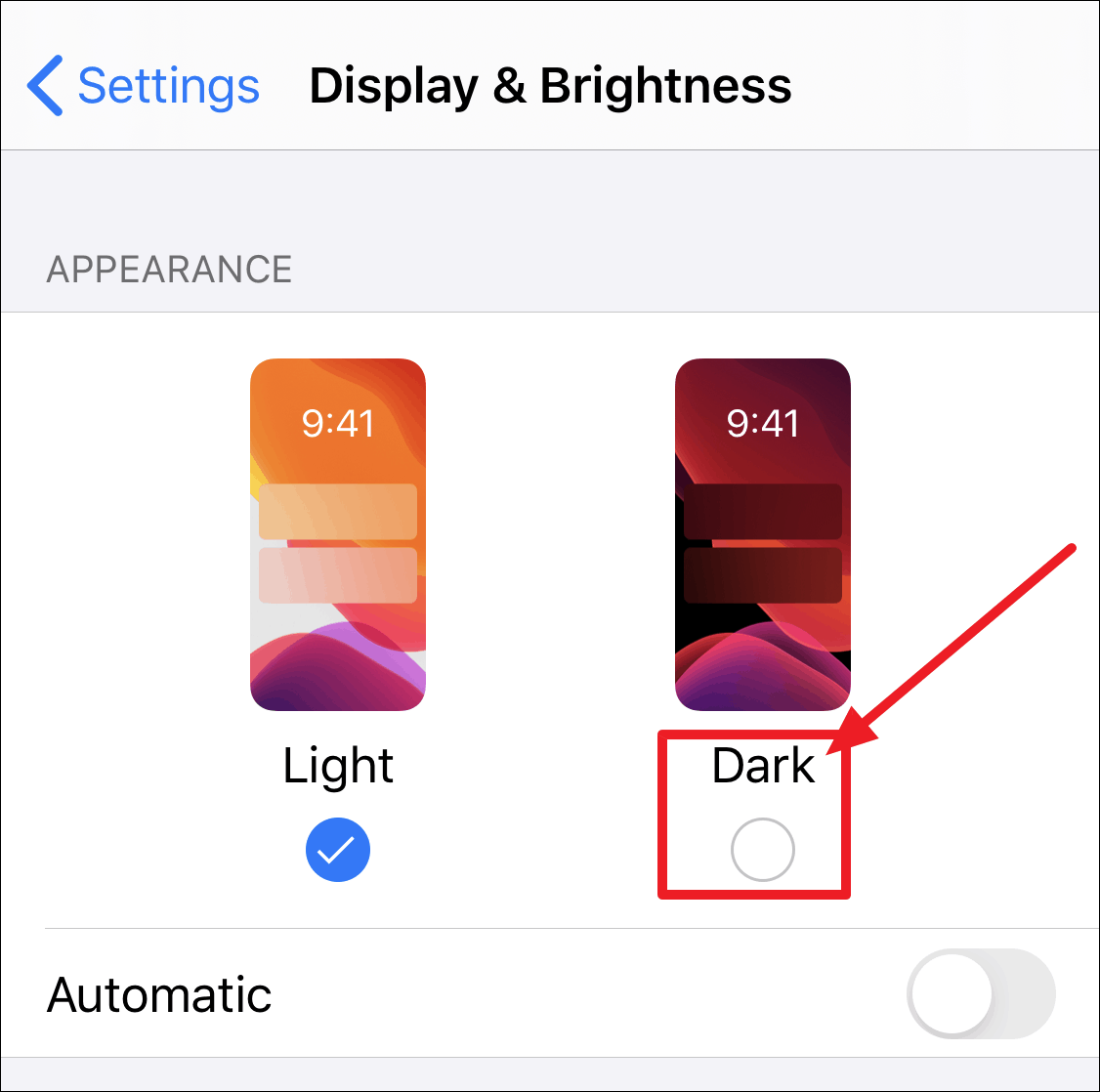
Disable Raise to Wake
Although Raise to Wake is a nifty feature that lets you view lock screen notifications without pressing any buttons, most of the time your phone screen gets turned on even when you didn’t want it to. This repeated turning on of the display take its toll on your battery life. Even if it is a very convenient feature, you can choose to turn it off if battery preservation is more important to you. You can still turn on the display with a tap even with Raise to Wake turned off.
You can disable this feature by going to Settings > Display & Brightness, then turn off the toggle for Raise to Wake.
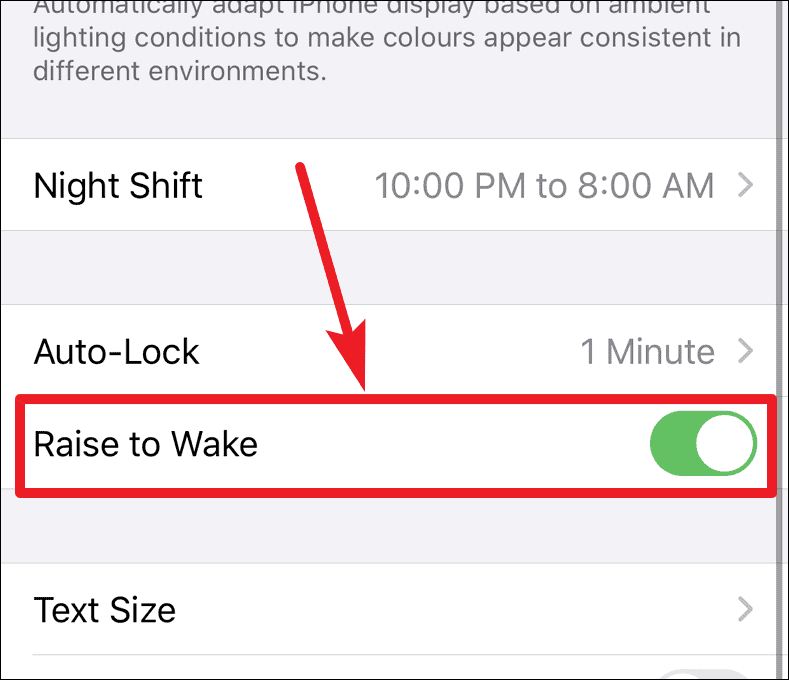
Disable Motion Effects
Motion effects, like the parallax effect of icons, on the iOS may be cool, but they also drain the battery of your device. But you can disable them if you can live without them. Disabling them would reduce the motion effects of the user interface.
To disable the motion effects, go to Settings > Accessibility > Motion, then turn on the toggle for Reduce Motion.
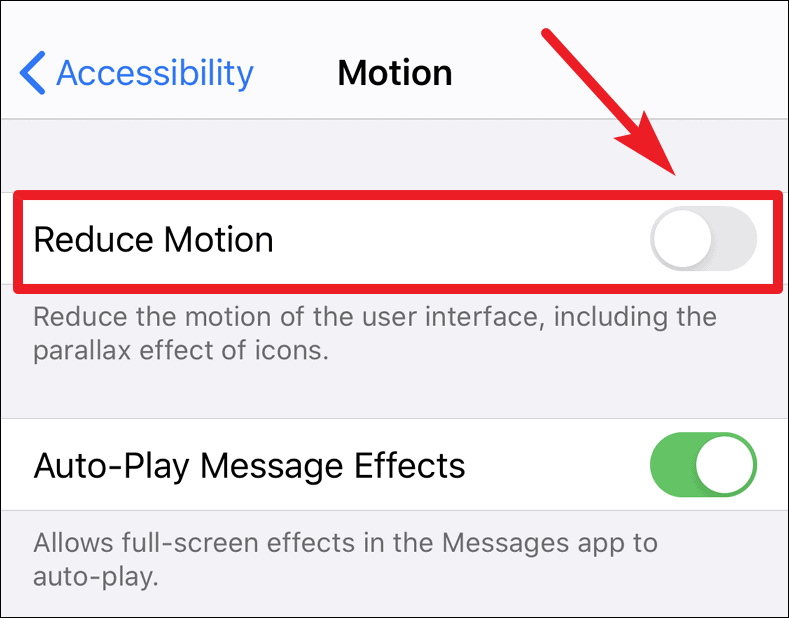
Enable Low Power Mode
Low Power Mode is a wonderful feature that reduces background activity like downloads and mail fetch. It’s the best setting to turn on if you’re concerned about battery usage.
You can turn it on from the Control Center at any time by tapping on the battery icon or ask Siri to turn it on for you. Alternatively, you can also turn it by going to Settings > Battery, then turn on the toggle for Low Power Mode.
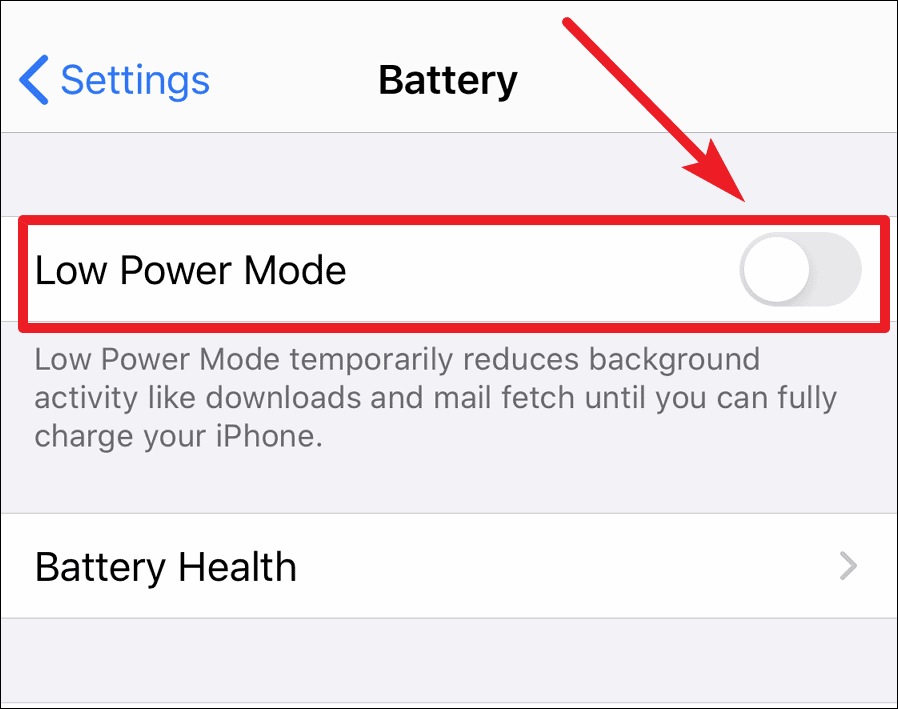
Disable Background App Refresh on Cellular
Background App Refresh is a wonderful feature that allows apps to refresh their content in the background so that every time you open them you don’t have to wait for the content to refresh and load. But it also eats up your battery. Though turning it off altogether is not recommended, you can turn it off for certain apps you don’t use that often.
To review the apps using background refresh, go to Settings > General > Background App Refresh. All the apps using it will be listed. Turn the toggle off for apps that are not used regularly to preserve battery life.
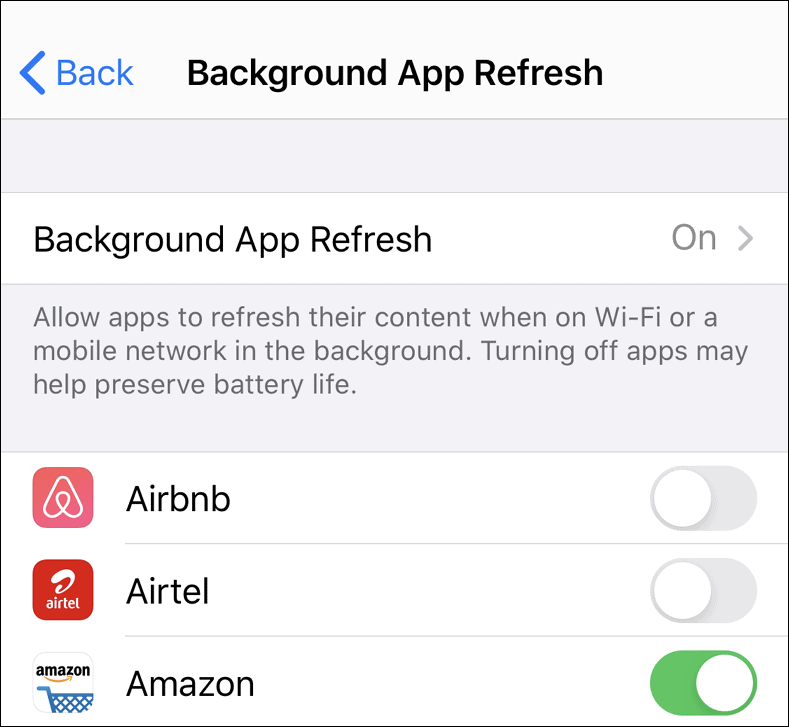
Another setting that you can change is to turn off the background app refresh altogether when your device is using Cellular Data. In the background app refresh settings, tap on the Background App Refresh option. The setting will be enabled for both Wi-Fi & Mobile Data. Change it to Wi-Fi only as Wi-Fi uses considerably less battery than cellular data.

💡 Use Wi-Fi in general whenever possible instead of the Cellular Data, like when at home or work, to preserve battery.
Limit Apps Using Bluetooth
iOS 13 introduced a feature that lets you find out which apps have requested Bluetooth access and you’d be surprised to see that a number of apps request access to Bluetooth for things like location tracking. But a lot of those apps have no business requesting Bluetooth access and if you turn off the access for them, none of the functionality will be impaired, but it will save your battery life.
To review the apps using Bluetooth, go to Settings > Privacy > Bluetooth. The apps accessing Bluetooth will be listed. Turn off the toggle for apps you want to deny access to. If for any app you find that it affects any functions, you can later turn it on.
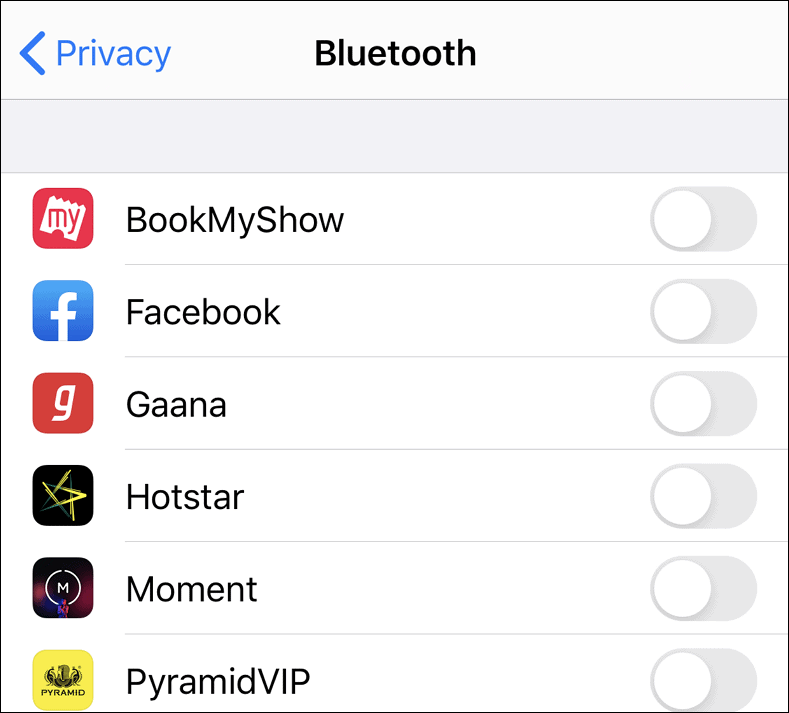
Limit Access to Location Services
Almost all apps these days request access to your location, and though it is a good idea to review an app’s access to the location for privacy reasons alone, it can also be beneficial for your battery life.
To manage Location Settings, go to Settings > Privacy > Location Services. It is not recommended to turn off the location services completely as many apps need access to it for the best user experience. But you can limit access to Location for individual apps.
Tap on an app and you will be able to choose from four options: Never, Ask Next Time, While Using the App, Always. Note that some apps won’t have all 4 options based on their functionality. Choose the most suitable option for each app, like choosing While Using the App or Ask Next Time is better for apps that don’t need continuous access to location and it protects both your privacy and battery life.
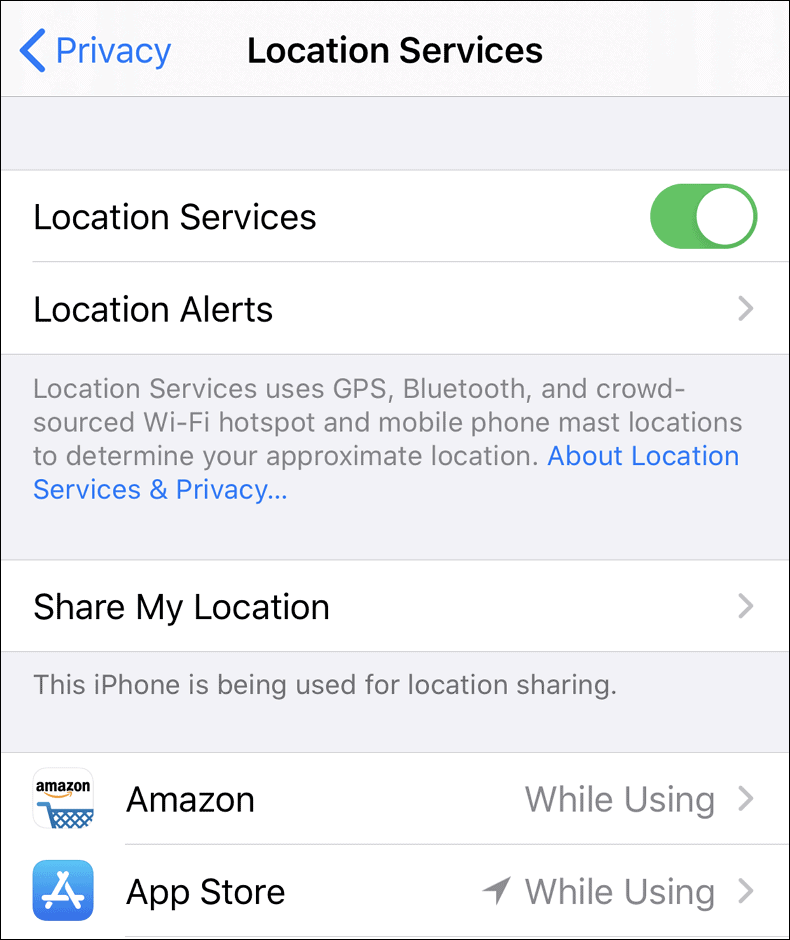
Bonus Tips
There are a few extra tips you can also use that are not really settings, but nonetheless, equally useful when it comes to improving iPhone battery life.
- Keep your iPhone face down when not in use. If you use iPhone 6 or newer, your phone has a feature where the screen won’t light up every time you receive a notification if it’s placed face down. This can save a lot of battery if you receive a lot of notifications.
- Turn on Airplane mode whenever you are in a bad reception area. Your iPhone spends a lot of energy trying to find signals continuously. Turning on the Airplane mode saves that battery from getting wasted.

